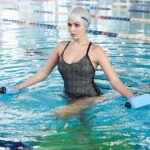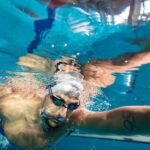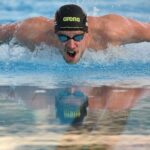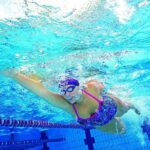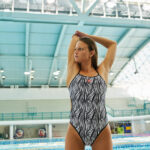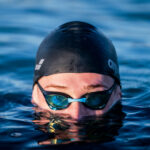A beginner’s guide to the backstroke start
Level: Beginner
The backstroke is different from all the other styles: it mainly involves your back muscles rather than your chest muscles and, above all, you cannot just “follow” the black line on the bottom of the pool. So it is hardly surprising that the start is different too. Let’s see how you can learn to do it.
Starting position
Because you swim on your back, you begin facing the wall with your back towards the pool. When you hear the command “ready”, you should:
– Take a firm grip of the bar below the starting block.
– Place your feet, either below or above the water level, against the wall, more or less shoulder’s width apart.
– Get ready to push off by pulling yourself gently towards the starting block until your buttocks reach the waterline.
– Relax your neck and lower your head so that you are looking at your knees.
Starting movement
When you hear the start command, your arms swing around sideways in a low semi-circular arc, your knees extend and your legs push in the opposite direction so that your body comes completely out of the water as you throw your head backward.
When you re-enter the water your hands are joined one on top of the other above your head. Your back arches even further and your legs, which are in a rather extended position, guide your body. Your hands enter the water before the rest of your body, which must remain as straight as possible to reduce drag to a minimum.
Once you have entered the water, exploit the underwater phase until (you feel) you are traveling as fast as your leg kick.
During the underwater phase, you can use either an ordinary backstroke kick (alternate legs) or a butterfly kick lying on your back until you reach the 15-meter limit after the start.
When your underwater speed is the same as your swim speed, as regards your leg kick, then it is the right moment to emerge from the water and start swimming.
Remember “practice is the best teacher” [cit.], but do not worry, everybody slips up now and again!
Written by:
arena coaches
Swim coaches, trainers and experts will give you all kinds of tips for performing at your best in both training and races.
